June 12, 2024–Tenerife, Canary Islands (Day Two)
- mlchad147
- Jun 13, 2024
- 4 min read

Yesterday we had a great time exploring the old city in Santa Cruz, the capital of Tenerife, and for once there was no bus ride involved, as we were able to walk straight off the ship and into town. Today, however, we got to see more of this fascinating island, and I liked what we saw.
Unlike most of our excursions, where a guide leads us through a destination’s highlights, today we were dropped off in two of Tenerife’s other cities and given free time to explore on our own. It’s a small island, so the bus rides were fairly short, which was nice, but they were long enough to give us an idea of this volcanic island’s terrain, and it is hilly. The roads are excellent though, so there were none of the adventurous, narrow twists and turns we’ve seen in some other places.
Our first stop was in Tenerife’s interior at San Cristóbal de La Laguna (La Laguna), the island’s former capital and a UNESCO World Heritage Site. La Laguna is almost as large as Santa Cruz (150,000 citizens to 205,000 for Santa Cruz), but it feels a lot smaller. Block after block of preserved two and three story colonial buildings give La Laguna more the feel of a large town than a small city. Despite its many narrow streets the city is very walkable, which I appreciated, since my eyes were usually focused on the charming, old Spanish homes and buildings that lined them.
There’s no single “wow” spot in La Laguna. Rather, it’s the accumulation of elaborately carved woodwork, pretty churches, elegant old Spanish homes, stone lined streets, cafes and shops that combine to create a truly charming environment. Hopefully my photos will convey that feel.
After the better part of two pleasant hours wandering around quiet La Laguna we returned to the bus for the short drive down to the island’s rugged northern coastline to the tourist town of Puerto de la Cruz. Unlike La Laguna, which feels smaller than it is, Puerto de la Cruz feels larger than its population of 30,000, probably because it was crammed with vacationers and anything but quiet.
The bus dropped us off a couple blocks from the shore, which was pretty obviously the center of the action, so we headed straight there. What we found was a wide, boardwalk-like stone walkway, lined with gift shops, bars, restaurants, a small church, and even a casino or two, almost all on the side opposite the beach. I said beach, but there was only one small, black sand beach in the area we strolled, and it frankly didn’t look very inviting. Most of the shoreline was rugged and rock or cliff lined, with strong waves breaking in from the Atlantic. One large area between the walkway and the ocean was covered by a large complex of swimming pools, bars and restaurants, which, according to its website, could be accessed for €5.50 per person. It looked nice, but even if we had been so inclined, I thought it was a little cool and windy for swimming.
The satellite map of Puerto de La Cruz shows a couple pretty black sand beaches a little farther off to our west, but we never made it that far, as we found plenty to see where we were. Again, we had a bit less than two hours on our own for sightseeing, eating and shopping before we returned to the bus for the forty minute trip back to Santa Cruz. Unfortunately, high clouds on the way prevented us from seeing Mount Teide, the massive volcano that is the highest point in all of Spain. Maybe next time.
We arrived back at the ship around 2:30 pm, an hour before all aboard time, and weighed anchor promptly at 4:00, with our next scheduled destination being Gibraltar on Friday, the 14th. Gibraltar is significant for us because when we dock we will have visited all seven continents on this crazy adventure. I can’t wait, and I’ll be back with a full report, so stay tuned.

Just a few blocks from the pier where we were docked, this theater is strongly reminiscent of the much larger Sydney Opera House.

One of the many charming streets in La Laguna. The city has hundreds of preserved colonial buildings, and is a UNESCO World Heritage Site.

This beautiful old theater is still in use today.

Beautiful spot for a cup of coffee and a pastry.

La Laguna is known for its elaborate woodwork.

Another example of woodwork around a window.

There were lots of great doors too.

Some of the fancier homes were open to the public. This is the interior courtyard of the Captain-General’s House.

This is the bell tower of the Church of our Lady of the Conception.
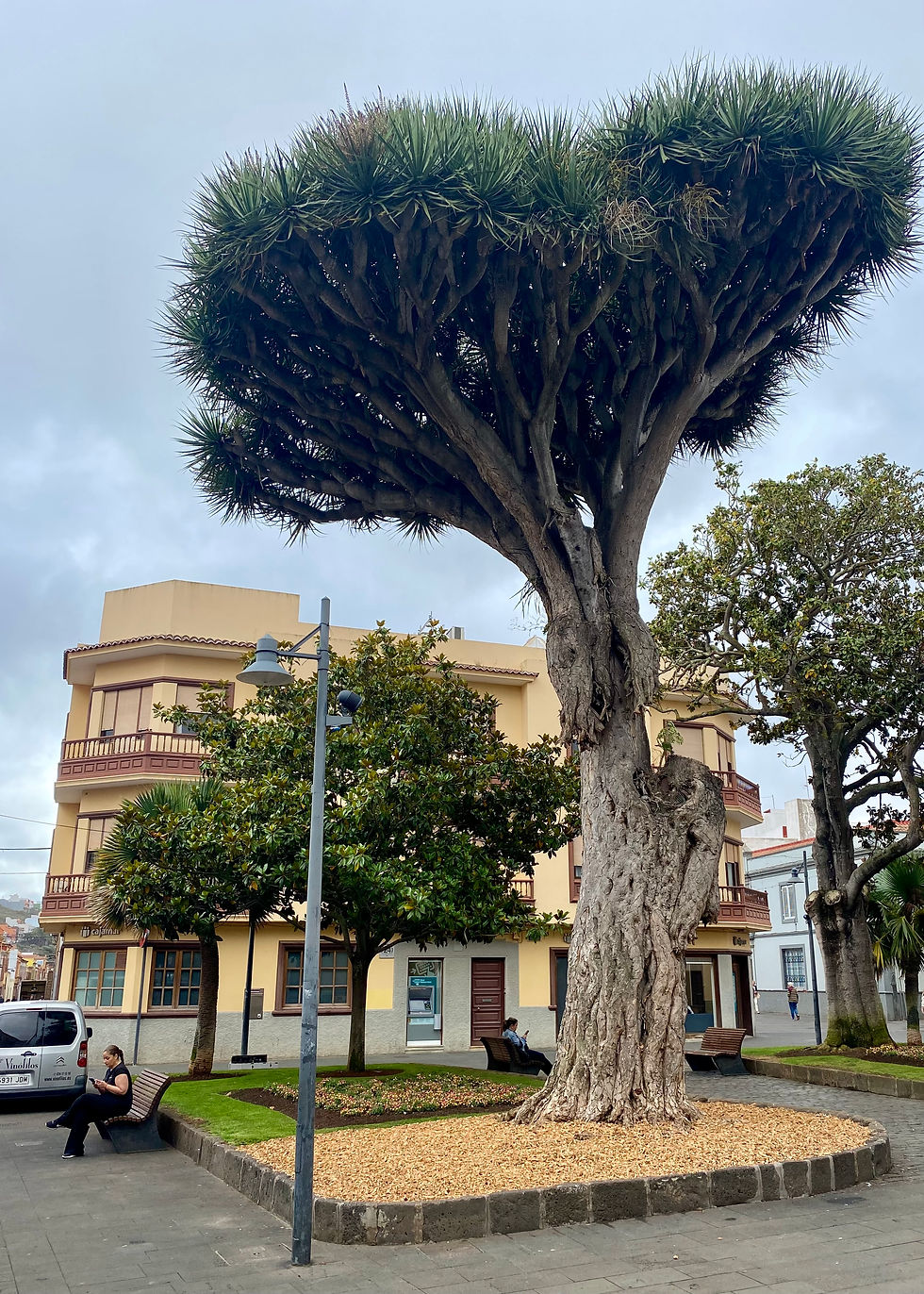
Even the trees are beautiful in La Laguna.

Somehow the plants growing on the roof of this building just added to its charm.
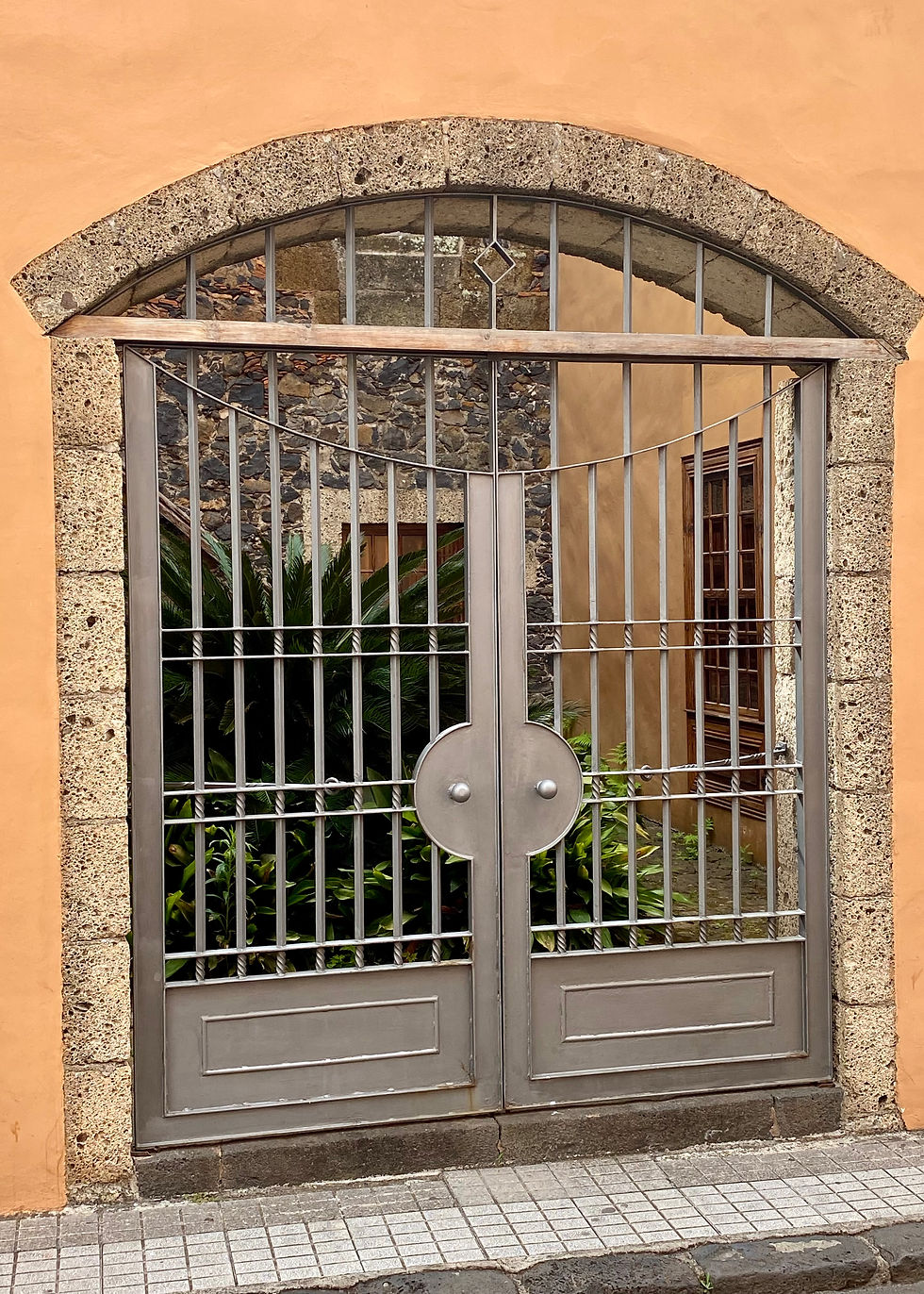
Peeking through the gate of the same building. I wish we could have gone inside.
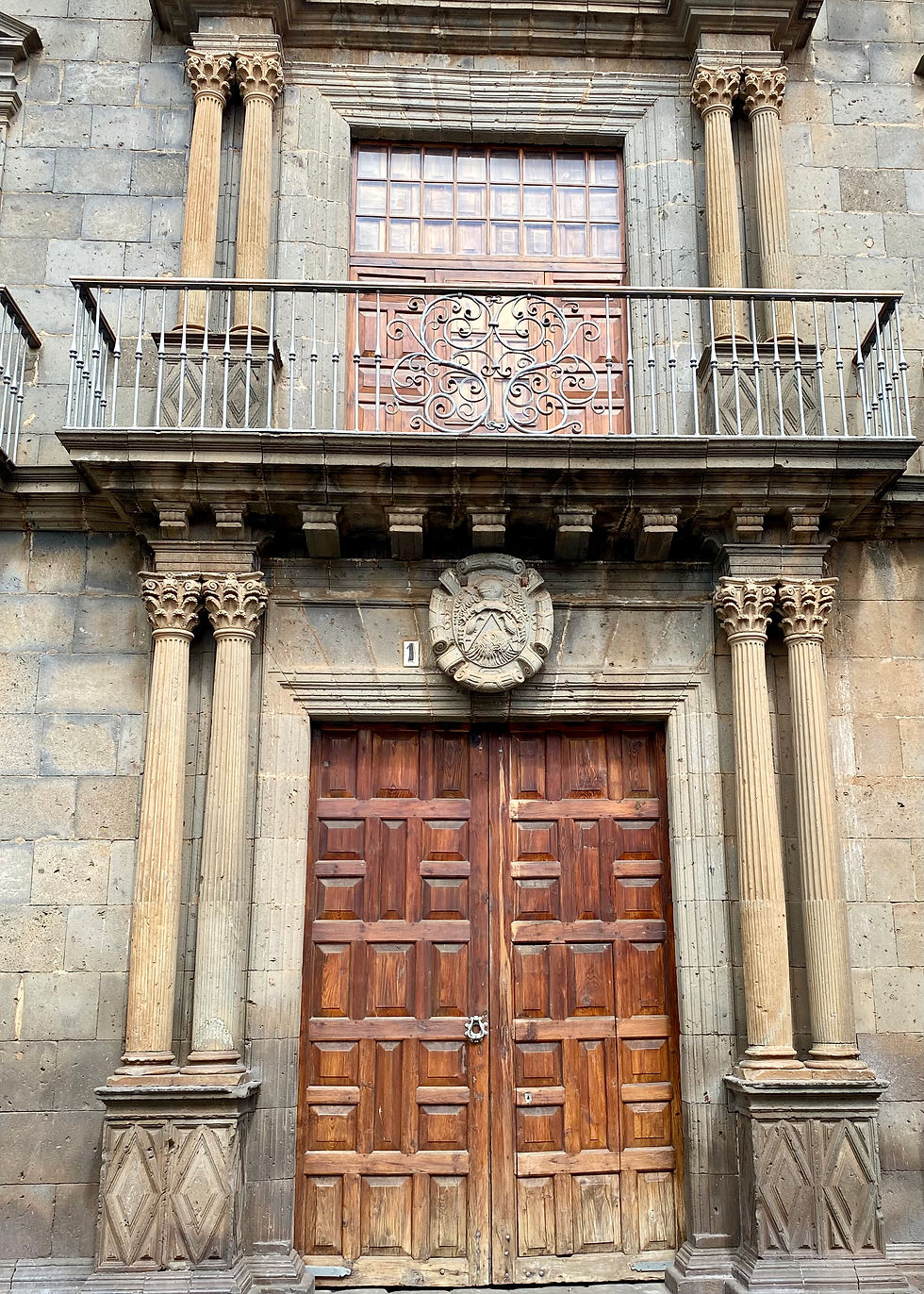
Another great old door and balcony.
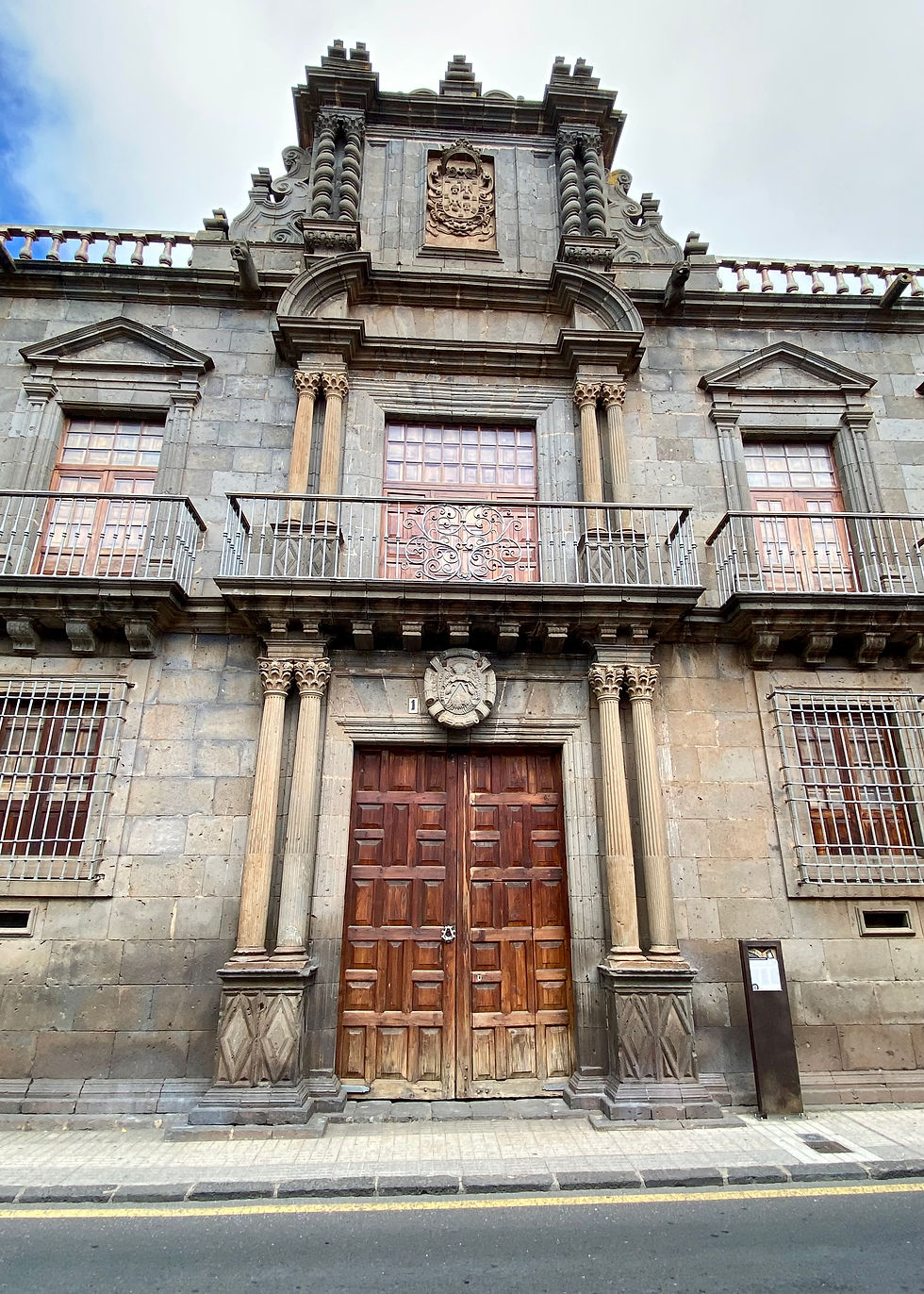
From a little farther away. This is the Palace of Nava and Grimón, 17th century Spanish royals. At the time La Laguna was the capital of Tenerife.

A lovely plaza in La Laguna.
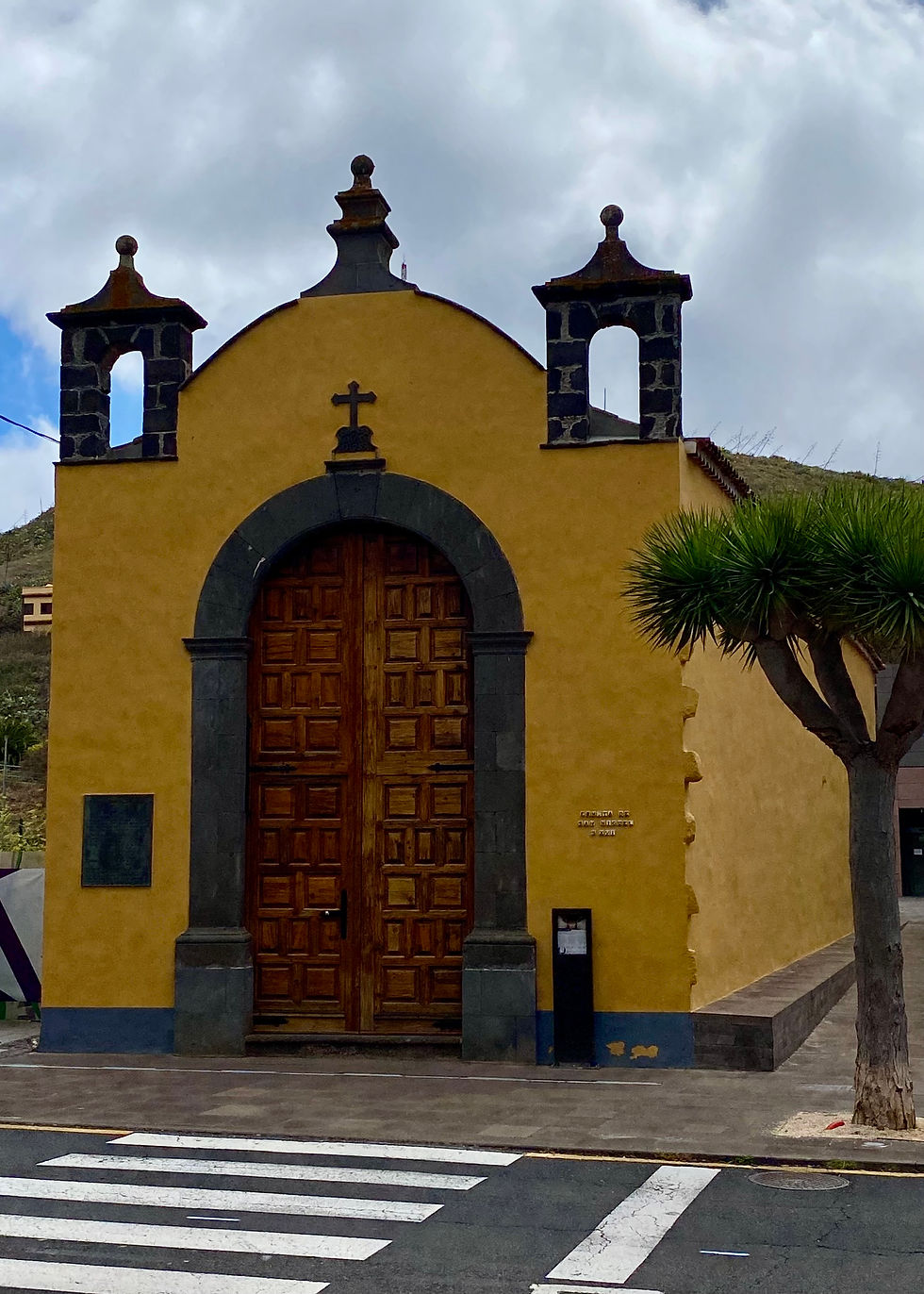
This pretty little church was just off the plaza in La Laguna.

One more photo from the plaza. La Laguna really is charming.

Now it’s on to Puerto de La Cruz, with its stone version of a boardwalk.

The ocean front is very scenic. TheThe swimming pool complex is open to the public at a cost of €5.50 per person.

I took this photo from the same spot, facing in the opposite direction. You can see a small public beach below the yellow flag.

There were plenty of places to eat and drink along the boardwalk.
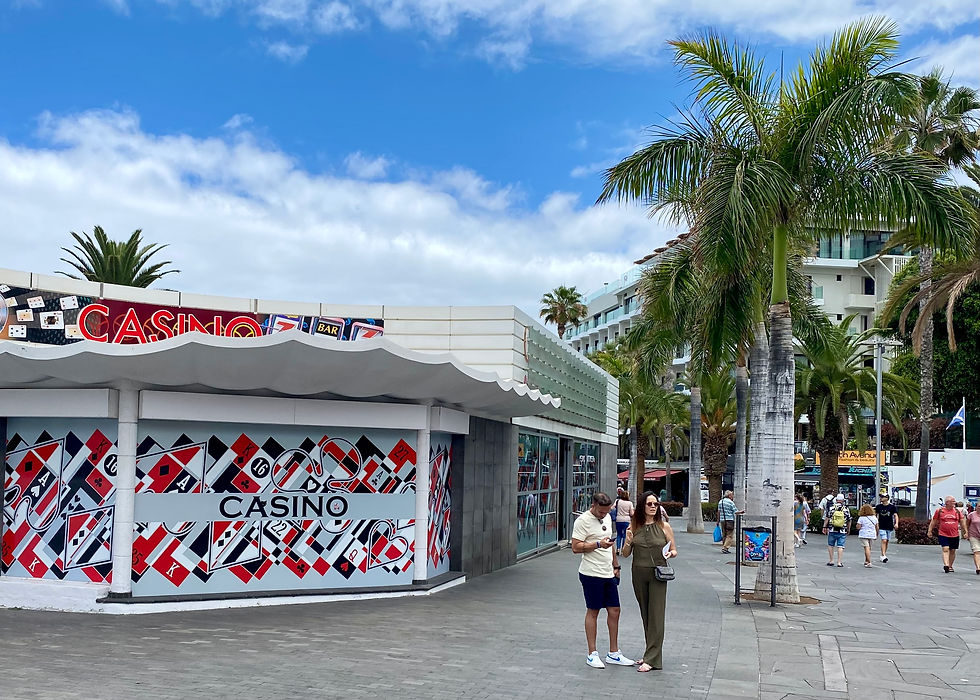
A small casino. Across the boardwalk there was a McDonald’s. Something for everybody.

Even a pretty little church.
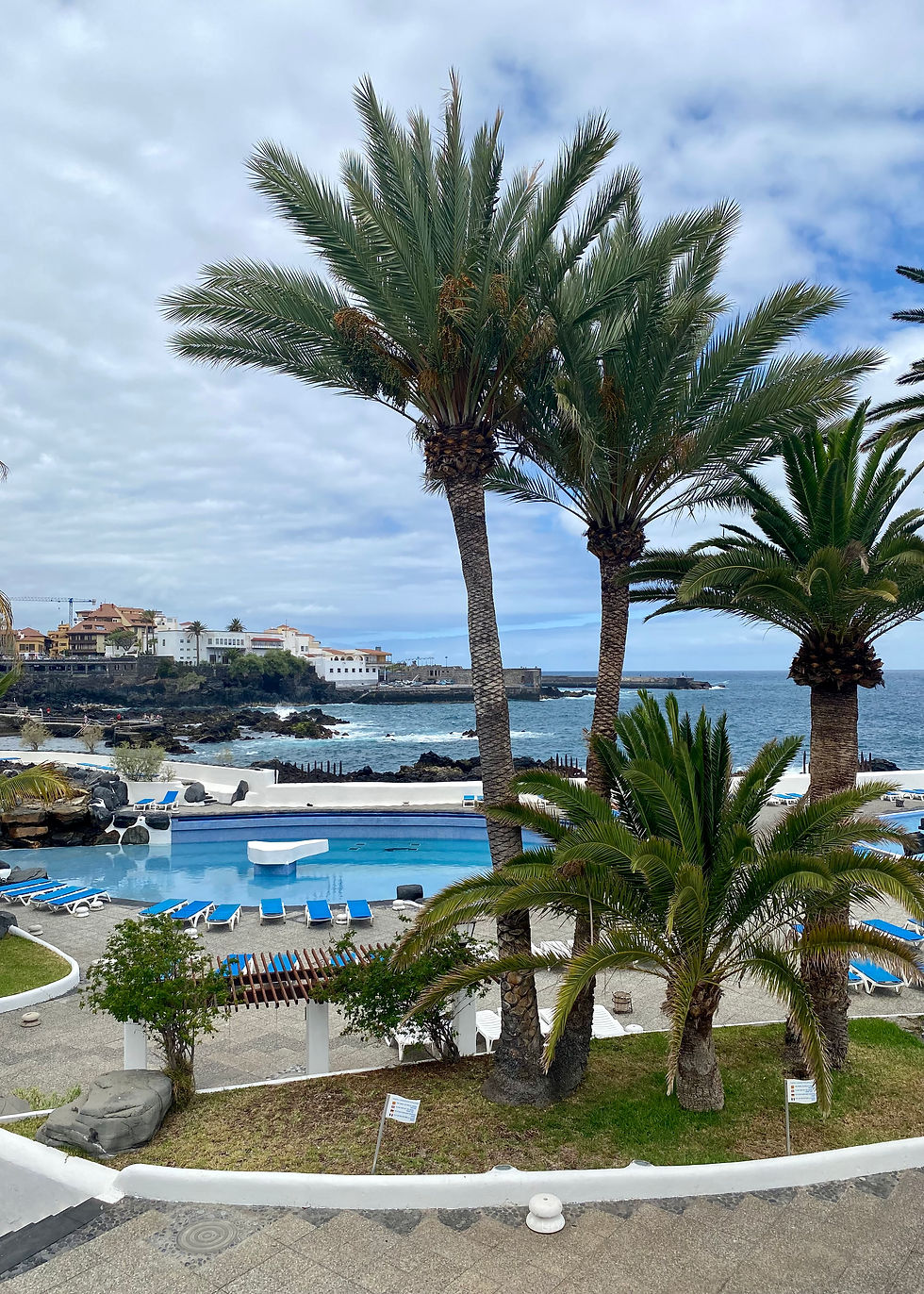
You can see why La Laguna is a popular tourist destination.

We did get away from the beach for a bit. This is the Iglesia Ntra. Sra. de la Pena de Francia Padres Agustinos.

This pretty tree was in front of the church.

One last photo from Puerto de La Cruz. Great vacation town.


